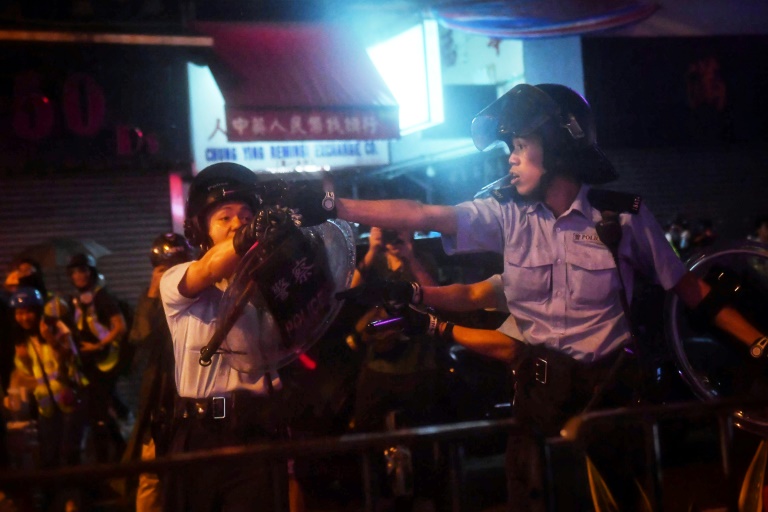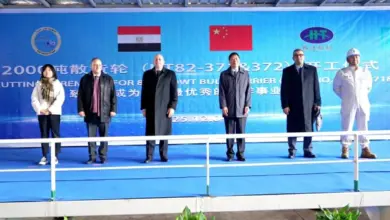
Hong Kong police said Monday they were forced to fire water cannon and a warning shot to fend off “extremely violent” demonstrators, following another weekend of clashes at pro-democracy rallies.
Sunday’s violence in the district of Tsuen Wan, around 10 kilometers (six miles) from the city center, was some of the worst in twelve weeks of political unrest roiling the international financial hub.
As night fell, a group of officers were cornered by protesters armed with bricks and other weapons, Hong Kong police said in a statement.
When one officer fell to the ground under a barrage of blows, and “facing threats to life”, six others drew their sidearms and one “fired a warning shot into the sky”, it said.
It is believed to be the first live round fired by an officer during the current crisis.
Fifteen officers were injured during the clashes, the statement said, while dozens of protesters were arrested — including a 12-year-old — for unlawful assembly, possession of weapons and assaulting police.
“Police appeal to members of the public to make a clean break with violent protestors,” the statement added, vowing “relentless action” to bring the perpetrators to justice.
The firing of a live round prodded an angry response from social media users, who mocked a police spokesman who had praised the “valiant and restrained” actions of officers on Sunday.
“If the police can’t control their emotion, how can they be valiant and restrained?” a Facebook user asked.
The violence erupted after a peaceful march nearby earlier Sunday. Police used tear gas against the black-clad, gas mask-wearing hardcore protesters, who had built barricades and thrown bricks and Molotov cocktails at lines of riot cops.
Police confirmed they deployed two water cannon vehicles “to stop violent acts”. The jets hit the barricades as demonstrators ran for cover.
The weekend of violence — unrest also flickered across the city on Saturday — banished several days of peaceful action, which included a human chain across the city.
With almost daily protests planned throughout the week and another major rally expected on Saturday, the movement shows no sign of abating.
Deadlock
The protests were sparked by an attempt by the city’s Beijing-backed government to pass an extradition bill to China, but has evolved into a wider call for greater democracy and police accountability.
The mainly young protesters — whose angst also stems from sky-high costs of living and a lack of jobs — say the future of the city of around seven million people hangs in the balance with Beijing chiselling away at their unique freedoms.
They have shown few signs of leaving the streets, while the city government has also refused to give ground.
Last week Carrie Lam, the city’s embattled leader, made vague promises of opening a “dialogue” to find a pathway through the unprecedented political confrontation.
On Saturday she met with grandees from politics and education to discuss the issue
“But can we point to a person who can honestly, genuinely be regarded as representing the protesters in the streets? No. Not a single one,” pan-democrat lawmaker James To Kun-sun, who supports the movement, told reporters on Monday.
The deadlock has sunk Hong Kong deep into crisis.
Throughout the protests, Beijing has used a combination of intimidation, propaganda and economic muscle to stifle the protests in a strategy dubbed “white terror” by the movement.
Major Hong Kong businesses have come under pressure over staff support for the protests, most notably airline Cathay Pacific and the city metro system — the MTR — which has been accused of ferrying demonstrators to rally sites.
Since the allegations in Chinese state media, the MTR has closed stations near planned protests.
The protests are hacking away at Hong Kong’s image as a prosperous and stable financial hub.
Hong Kong stocks dived more than three percent at the opening of trade on Monday.
Image: AFP/File / Lillian SUWANRUMPHA Sunday’s clashes were some of the worst in the twelve weeks of political unrest tremoring through Hong Kong




